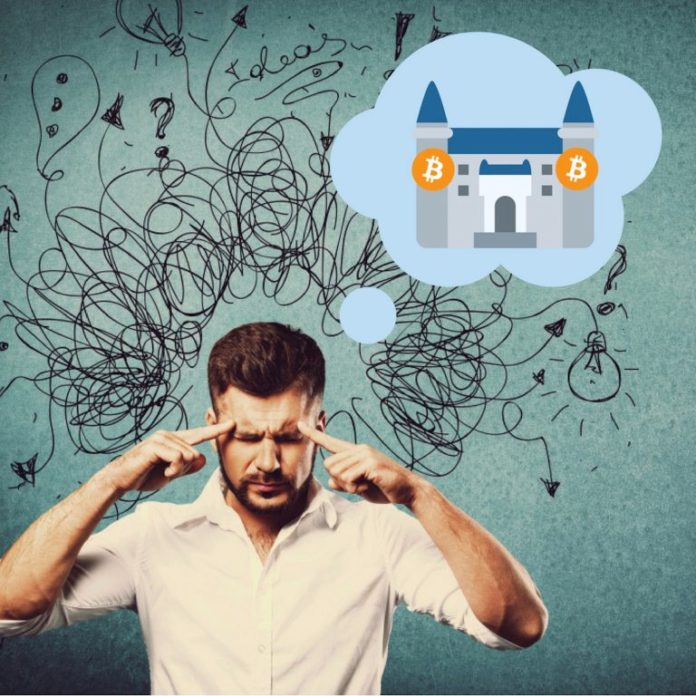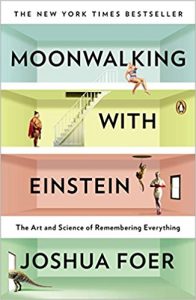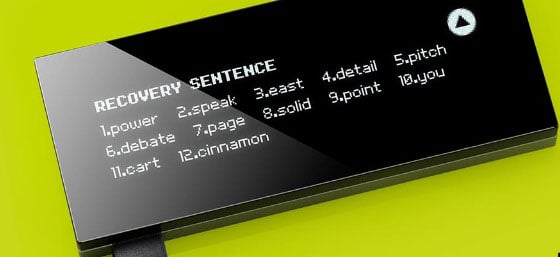
A 12 or 24-word recovery seed is the key to your cryptocurrency wallet. That’s why, upon creating it, you’re prompted to write it down and store it in a safe place. But what if you didn’t have to write it down? What if there was a virtually failsafe means of committing those words to memory, enabling you to recall them at a moment’s notice? As it happens, there is. It’s called a memory palace and, with a little practice, it provides an effective means of developing an unforgettable wallet seed.
Also read: An In-Depth Look at the Cryptocurrency Economy’s ‘Stablecoin’ Trend
Build a Memory Palace and Lock Your Crypto Away from Fire and Thieves
 In his 2011 book “Moonwalking with Einstein: The Art and Science of Remembering Everything”, Joshua Foer details the astonishing exploits of “mental athletes”. The author embarks on a year-long quest to improve his memory with the help of professionals, the best of whom can memorize a deck of cards in under 30 seconds. The secret to the feat is the construction of a ‘memory palace’, a visual technique that was practiced by the Ancient Greeks and Romans. This mnemonic method calls for creating “an imaginary location in your mind where you can store images. The most common type of memory palace involves making a journey through a place you know well, like a building or town. Along that journey there are specific locations that you always visit in the same order.”
In his 2011 book “Moonwalking with Einstein: The Art and Science of Remembering Everything”, Joshua Foer details the astonishing exploits of “mental athletes”. The author embarks on a year-long quest to improve his memory with the help of professionals, the best of whom can memorize a deck of cards in under 30 seconds. The secret to the feat is the construction of a ‘memory palace’, a visual technique that was practiced by the Ancient Greeks and Romans. This mnemonic method calls for creating “an imaginary location in your mind where you can store images. The most common type of memory palace involves making a journey through a place you know well, like a building or town. Along that journey there are specific locations that you always visit in the same order.”
The technique can be used to memorize extremely long numbers and phrases. In 2005, Lu Chao, for example, recited pi to 67,890 places. Memorizing a 12 or 24-word seed, in comparison, should be child’s play, and it doesn’t call for incredible mental athleticism. Even if you’re the sort of person who struggles to recall where you left your keys and constantly forgets birthdays, committing a dozen words to memory should be within your grasp thanks to the highly visual technique involved.

How to Create a Memory Palace
The title of Joshua Foer’s book – Moonwalking with Einstein – is a reference to one of the bizarre mental images he used as part of his mental journey to stash and then later retrieve a particular item. The more unusual the image you conjure, the better your chances of recalling it when required. As an example of how this might work in practice, let’s take the 12-word wallet seed cited on Bitcoin Wiki: witch collapse practice feed shame open despair creek road again ice least.
The particular ‘palace’ we’ll choose for this exercise is your childhood home. Picture it in your head: the color of the front door; the scent of the hallway; the layout of the rooms. Now, with that imagery at the forefront of your mind, prepare to revisit your home with your wallet seed in tow:
 As you walk up the path, you hear a shriek and, looking up, see a witch upon a broomstick fall out of the sky and collapse onto the doormat. Alarmed, you sidestep her and turn the key in the door, catching the lock at the first attempt thanks to years of practice. You step inside and something brushes against your leg and miaows. You realize you didn’t feed the cat that morning, to your shame, and walk to the kitchen to make amends. You open the cupboard and despair at the realization that you forgot to purchase cat food at the store. Exiting your home, you jump in the car and drive past the creek as you take the same road again into town. The route is treacherous as the puddles freeze and ice starts to form, but feeding the poor cat is the least you can do.
As you walk up the path, you hear a shriek and, looking up, see a witch upon a broomstick fall out of the sky and collapse onto the doormat. Alarmed, you sidestep her and turn the key in the door, catching the lock at the first attempt thanks to years of practice. You step inside and something brushes against your leg and miaows. You realize you didn’t feed the cat that morning, to your shame, and walk to the kitchen to make amends. You open the cupboard and despair at the realization that you forgot to purchase cat food at the store. Exiting your home, you jump in the car and drive past the creek as you take the same road again into town. The route is treacherous as the puddles freeze and ice starts to form, but feeding the poor cat is the least you can do.
That’s a pretty dumb story, but if you were to run through it enough times while visualizing your childhood home, there’s a good chance you’d be able to commit it to memory and keep it there. Of course, that’s not the only possible setting for your memory palace; you could choose the route of the paper round you used to cycle, a former workplace, favorite art gallery, or friend’s home. So long as it’s a place you know intimately, and the prompts you lay down as you traverse that ‘palace’ are as quirky as possible, you should have no trouble recalling them.
Why Use a Memory Palace?
 Committing a seed phrase to memory may seem pointless when you could just as easily write it down and stash it in a safe place. But aside from the satisfaction to be derived from completing the exercise, there are practical benefits to be derived. Citizens of war-torn countries, or who live under despotic regimes, may be obliged to flee at short notice; knowing that their cryptocurrency remains retrievable, even if they’re obliged to escape with just the shirt on their back, will be of comfort. And for those who live in less turbulent lands, fire and theft can separate you from your seed for good. Even bank vaults aren’t entirely safe. Keep a physical copy of your seed with a backup in your head and you’ll be protected from acts of god, men, and anyone else intent on depriving you of your precious crypto.
Committing a seed phrase to memory may seem pointless when you could just as easily write it down and stash it in a safe place. But aside from the satisfaction to be derived from completing the exercise, there are practical benefits to be derived. Citizens of war-torn countries, or who live under despotic regimes, may be obliged to flee at short notice; knowing that their cryptocurrency remains retrievable, even if they’re obliged to escape with just the shirt on their back, will be of comfort. And for those who live in less turbulent lands, fire and theft can separate you from your seed for good. Even bank vaults aren’t entirely safe. Keep a physical copy of your seed with a backup in your head and you’ll be protected from acts of god, men, and anyone else intent on depriving you of your precious crypto.
Do you think a memory palace is an effective way of recalling a wallet seed, or is the risk of forgetting it too high? Let us know in the comments section below.
Images courtesy of Shutterstock, and Keepkey.
Need to calculate your bitcoin holdings? Check our tools section.
The post Create an Unforgettable Wallet Seed by Building a Memory Palace appeared first on Bitcoin News.

Bitcoin.com is author of this content, TheBitcoinNews.com is is not responsible for the content of external sites.
Our Social Networks: Facebook Instagram Pinterest Reddit Telegram Twitter Youtube










